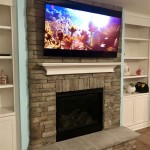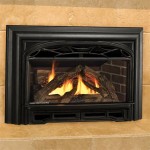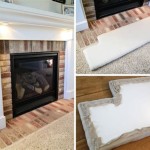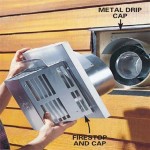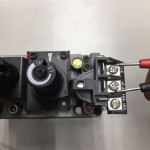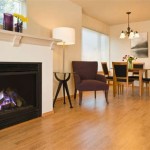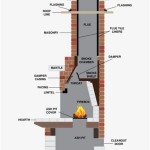Outdoor Wood Burning Fireplace Box: A Comprehensive Guide
An outdoor wood-burning fireplace box provides a dedicated and controlled space for enjoying the warmth and ambiance of a natural fire within an outdoor living area. Unlike open fire pits, a fireplace box offers a degree of enclosure, directing heat and smoke more efficiently, and often featuring a chimney or vent to further manage emissions. This article will explore the key aspects of outdoor wood-burning fireplace boxes, including their design considerations, material choices, installation requirements, safety measures, and maintenance practices.
The selection of an outdoor wood-burning fireplace box involves several critical decisions. These encompass aesthetic preferences, functionality requirements, budget constraints, and adherence to local regulations. A thorough understanding of these factors is crucial for ensuring a successful implementation that aligns with the user's needs and enhances the outdoor environment.
Design and Functionality Considerations
The design of an outdoor fireplace box plays a significant role in its overall appeal and performance. The desired architectural style should complement the existing outdoor space. Options range from rustic and traditional designs featuring natural stone or brick to sleek, modern designs incorporating materials like stainless steel or concrete. The size and shape of the firebox itself influence the heat output and viewing area. A larger firebox will accommodate larger logs and produce more heat, while the shape impacts the visibility of the flames from different vantage points.
Beyond aesthetics, functionality considerations include the presence of features such as an integrated ash pan for easier cleanup, a spark screen to prevent embers from escaping, and a damper to control airflow. These features contribute to the ease of use and safety of the fireplace. The inclusion of a chimney or vent is essential for directing smoke away from the seating area and ensuring proper combustion. The height and design of the chimney influence the draft and efficiency of the fireplace.
Placement is another critical aspect of the design process. The fireplace box should be located in a safe and accessible area, away from flammable materials such as trees, fences, or overhangs. Prevailing wind patterns should be considered to minimize smoke exposure for users and neighbors. Proximity to seating areas is important for maximizing enjoyment of the fire, but sufficient clearance should be maintained to prevent accidental burns.
Moreover, consider the integration of the fireplace box into the overall landscape design. This might involve incorporating it into a patio, deck, or dedicated outdoor living room. The surrounding area can be enhanced with features such as built-in seating, storage for firewood, and landscaping elements that complement the fireplace design.
Material Selection and Construction
The materials used in the construction of a wood-burning fireplace box significantly impact its durability, heat retention, and aesthetic appeal. Common materials include brick, stone, concrete, and metal (typically steel or stainless steel). Each material offers distinct advantages and disadvantages in terms of cost, maintenance, and performance.
Brick and stone are popular choices for their classic look and excellent heat retention properties. They are durable and can withstand high temperatures, making them well-suited for fireplace construction. However, they can be more expensive than other materials and require skilled labor for installation. Different types of brick and stone offer varying degrees of thermal performance and aesthetic characteristics. For example, firebrick is specifically designed to withstand extreme temperatures and is often used to line the firebox itself.
Concrete is a versatile material that can be cast into various shapes and finishes. It offers a modern aesthetic and can be stained or textured to match the surrounding environment. Concrete is also relatively durable and can withstand high temperatures, although it may be susceptible to cracking over time if not properly reinforced. Concrete fireplace boxes can be pre-cast or custom-built on-site.
Metal, such as steel or stainless steel, is often used for the firebox itself and for components such as the chimney or vent. Steel is a strong and relatively inexpensive material, but it is prone to rust if not properly protected. Stainless steel is more resistant to corrosion but is also more expensive. Metal fireplace boxes are often prefabricated and can be easier to install than those made of brick or stone. The use of refractory materials within the metal firebox is critical to protect the metal from excessive heat and prolong its lifespan.
The choice of materials should also consider the local climate. In areas with extreme temperature fluctuations, materials should be resistant to cracking and expansion or contraction. In coastal areas, materials should be resistant to corrosion from salt air.
Installation and Safety Requirements
Proper installation is paramount for ensuring the safe and efficient operation of an outdoor wood-burning fireplace box. Installation requirements vary depending on the type of fireplace box and local building codes. It is essential to consult with a qualified contractor or building inspector before commencing any installation work.
A solid and level foundation is crucial for supporting the weight of the fireplace box. The foundation should be constructed of non-combustible materials such as concrete or stone. The size of the foundation should be sufficient to accommodate the footprint of the fireplace box and any surrounding hearth extension.
Clearance requirements are critical for preventing fires. The fireplace box should be located a safe distance from any combustible materials, including trees, fences, decks, and overhangs. Local building codes typically specify minimum clearance distances based on the height of the chimney or vent. It is also important to maintain adequate clearance around the firebox itself to prevent accidental burns.
The chimney or vent must be properly sized and installed to ensure adequate draft and prevent smoke from entering the seating area. The height of the chimney should be sufficient to clear any nearby obstructions, such as trees or buildings. The chimney should also be equipped with a spark arrestor to prevent embers from escaping and potentially starting a fire.
Safety precautions should be observed at all times when using a wood-burning fireplace box. Never leave a fire unattended, and always ensure that the fire is completely extinguished before leaving the area. Keep a fire extinguisher or a source of water nearby in case of an emergency. Teach children about fire safety and supervise them closely when the fireplace is in use. Avoid burning treated lumber or other materials that can release harmful fumes.
Regular inspections and maintenance are essential for ensuring the continued safe and efficient operation of the fireplace box. Inspect the chimney or vent regularly for creosote buildup. Creosote is a flammable substance that can accumulate in the chimney and potentially cause a chimney fire. Clean the chimney as needed to remove creosote deposits. Inspect the firebox for cracks or damage and repair them promptly. Keep the area around the fireplace box clear of debris and flammable materials.
Adherence to local codes and regulations is crucial. Permits may be required for the installation of an outdoor wood-burning fireplace box. Contact the local building department to determine the applicable requirements and obtain any necessary permits before starting the project. Some municipalities may have restrictions on the types of fireplaces that are allowed or on the hours during which they can be used.
Consider professional installation for complex projects. While some homeowners may be comfortable installing a prefabricated fireplace box themselves, more complex projects involving custom construction or chimney installation may require the expertise of a qualified contractor. A professional installer can ensure that the fireplace is installed correctly and safely, and that it complies with all applicable building codes.
Education and awareness are essential for safe operation. Familiarize oneself with the proper techniques for building and maintaining a fire. Understand the risks associated with wood-burning fireplaces and take steps to mitigate those risks. Share this knowledge with other members of the household to ensure that everyone is aware of the safety precautions.
By carefully considering these design, material, installation, and safety factors, one can create an outdoor wood-burning fireplace box that provides warmth, ambiance, and years of enjoyment.

Find Your Perfect Fire Outdoor Fireplaces And Kitchen At Bonfires

Outdoor Fireplace Kits Masonry Stone

Diy Outdoor Fireplace Kit Fremont Makes Hardscaping And Easy

Endless Summer Black Wood Burning Firepit With Cooking Surface Rockford Chimney

Girse Outdoor Fireplace And Bbq Robey S

Outdoor Fireplace Kits Masonry Stone

Outdoor Fireplace Round Grove Mezzo Fp1600 Patio Furnishings

Superior 42 Inch Wood Burning Fireplace Wt3042

Endless Summer 45 In H Steel Wood Burning Outdoor Fireplace With Chimney And Included Grate Cooking Waf1013c The Home Depot

Fireplaces Cambridge Pavingstones Outdoor Living Solutions With Armortec

